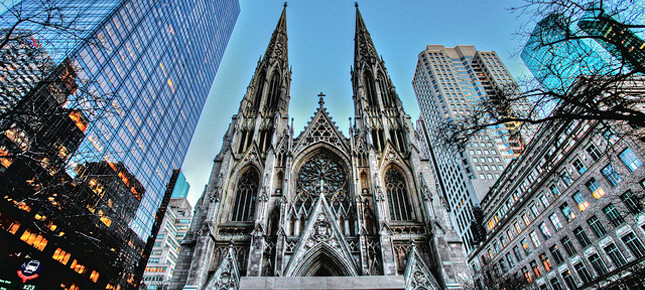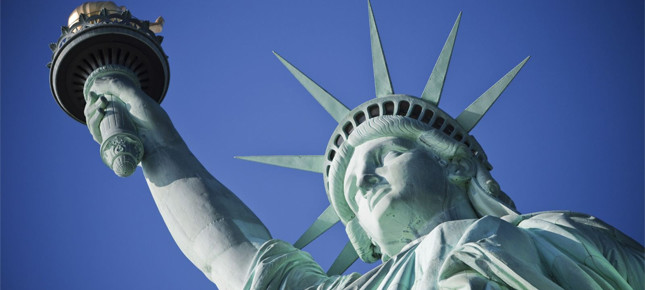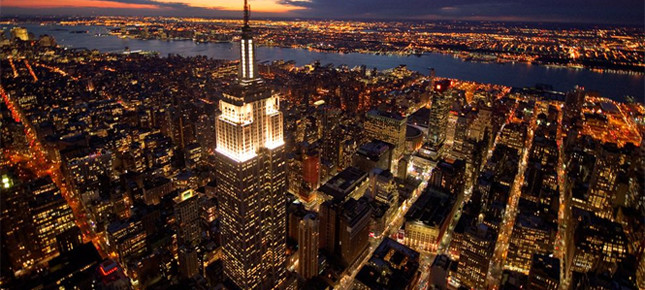The Verrazano-Narrows Bridge was the longest suspension bridge in the world at the time of its completion in 1964, surpassing the Golden Gate Bridge by 60 feet.
Here are the facts you ought to know:
– construction began on August 13, 1959
– bridge opened in two stages:
··· upper level: November 21, 1964
··· lower level: June 28, 1969
– central span: 4,260 feet (1,298 m)
– tower height: 693 feet (211 m)
– clearance below: 228 feet (69.5 m) at mean high water
– deepest foundation below average high water: 170 feet (52 m)
– total construction cost: $320,100,000
– daily traffic: approximately 200,000 vehicles
OTHER FACTS:
Although still the longest suspension bridge in the Americas, it is currently the eleventh longest in the world.
The bridge was named for both, the Florentine explorer Giovanni da Verrazano, who, in 1524, was the first European to sail into New York Harbor, and for the body of water it spans: the Narrows.
The ends of the bridge are at historic Fort Hamilton in Brooklyn and Fort Wadsworth in Staten Island, both of which guarded New York Harbor at the Narrows for over a century.
Its monumental 693 foot high towers are 1 5/8 inches farther apart at their tops than at their bases because the 4,260 foot distance between them made it necessary to compensate for the earth’s curvature.
Each tower weighs 27,000 tons and is held together with three million rivets and one million bolts.
The diameter of each of the four suspension cables is 36 inches (914 mm). Each cable is composed of 26,108 wires amounting to a total of 143,000 miles (230,136 km) in length.
The towers can be seen from spots in all five boroughs of New York City and in New Jersey.
Seasonal contractions and expansions of the steel cables cause the double-decked roadway to be 12 feet lower in the summer than in the winter.
Located at the mouth of upper New York Bay, the bridge not only connects Brooklyn with Staten Island but is also a major link in the interstate highway system, providing the shortest route between the middle Atlantic states and Long Island.
In Brooklyn, the bridge connects to the Belt Parkway and the Brooklyn-Queens Expressway and to the largely residential community of Bay Ridge.
Staten Island has experienced rapid development after the bridge opened in 1964.
The bridge was the last great public works project in New York City overseen by Robert Moses, the New York State Parks Commissioner and head of the Triborough Bridge and Tunnel Authority, who had long desired the bridge as a means of completing the expressway system which was itself largely the result of his efforts.
The bridge was also the last project designed by Chief Engineer Othmar Ammann, who had also designed most of the other major crossings into and within New York City, including the George Washington Bridge, the Bayonne Bridge, the Bronx Whitestone Bridge, the Triborough Bridge, and the Throgs Neck Bridge.
The plans to build the bridge caused considerable controversy in the Brooklyn neighborhood of Bay Ridge, because many families had settled in homes in the area where the bridge now stands and were forced to relocate.
Fort Lafayette was an island coastal fortification in New York Harbor, built next to Fort Hamilton at the southern tip of what is now Bay Ridge. It was destroyed as part of the bridge’s construction in 1960; the Brooklyn-side bridge pillars now occupy the fort’s former foundation.
New York City Mayor Robert F. Wagner cut the ribbon at the opening ceremony, which was attended by over 5,000 people. He was the first person to be driven over the bridge.
Three men died building the bridge.
The Verrazano–Narrows Bridge is an important location in the 1977 film Saturday Night Fever. in which Tony Manero (John Travolta) and his friends climb the bridge to show-off, Tony impresses his love interest, Stephanie Mangano, with his knowledge of the bridge’s history and statistics, and tragically, Tony’s friend Bobby C. falls off the bridge as Tony tries to talk him down.
In The Avengers, superhero Iron Man flies under, reverses course, and overflies the bridge on the way to intercepting a nuclear missile.
The bridge marks the gateway to New York Harbor; all cruise ships and most container ships arriving at the Port of New York and New Jersey must pass underneath the bridge and therefore must be built to accommodate the clearance under the bridge. This fact affected the construction and the shape of the funnel (chimney) on Queen Mary 2, currently the largest ocean liner ever built. The funnel’s original height design had to be altered in order to make it possible for the ship to pass under the Verrazano-Narrows Bridge at high tide. The final design of the ship now permits a minimum of ONLY 13 feet (4.0 m) of clearance under the bridge at high tide. Watch the video of QM2 sailing under the Verrazano Bridge:
MAP & DIRECTIONS:

The Cathedral of St. Patrick (commonly called St. Patrick’s Cathedral)...

“The Statue of Liberty Enlightening the World” (French: La Liberté...

The Empire State Building stood as the world’s tallest building...

